The Do's And Don'ts Of Home Espresso
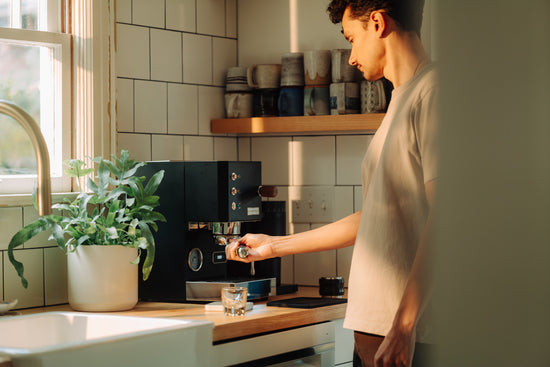
One of the most beautiful things about the specialty coffee world is its dynamism— its ability to course-correct and evolve with the addition of new knowledge and techniques to improve the craft for everyone. For instance, for several years, coffee experts and barista trainers in the specialty coffee world touted that 40 lbs of pressure was the gold standard for tamping. This concept was unquestioned for a long time, and even though it has been revised and left behind by the specialty coffee community, the 40 lbs of pressure myth persists. Think about it for a moment. Why 40 lbs of pressure? How do you measure this? How do you quantify this? Does the 40lbs of pressure rule consider the specific user or the coffee? Many of these coffee myths are sussed out by pure speculation rather than actual rigorous study.
Below, we will consider a few do’s and don’ts of home espresso to illustrate what you should consider when brewing at home and what you don’t need to waste your time on. Remember that you are the person who is drinking the espresso, so the most important thing is your individual palate. Now, let’s talk about what you should not be doing, starting with, you guessed it, tamping.
DON’T aim for a specific tamping pressure
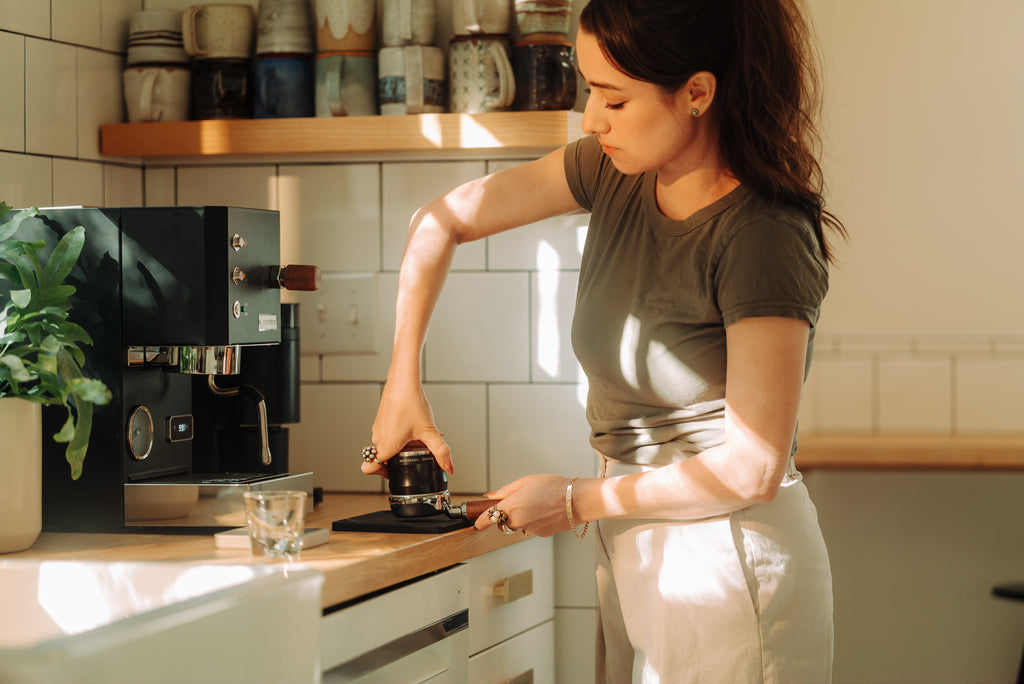
Consistency is key for proper tamping technique; thus, effective tamping’s hallmarks require you to tamp as evenly and straight as possible, as outlined in our how to perfect your tamp tutorial.
It is important to note that some of the most popular tampers, like the Normcore V4 and the Force tamper, are spring-loaded and have leveling collars to mitigate tamping inconsistencies. The Normcore V4 even comes with several interchangeable springs for various pressures. However, as Lance Hedrick says in a recent video, “just because you have a 30 lb spring or a 15 lb spring doesn’t mean you’re getting 15 lbs of pressure or 30 lbs of pressure unless you have the perfect volume [of coffee] in your basket”. These tampers can be excellent for consistency, including the likes of the depth-calibrated Saint Anthony New Levy tamper and, for traditionalists, the Pullman Big Step.
Key takeaways: tamp evenly until you meet resistance, ensure that you are tamping as as evenly as possible, and ensure that you have the correct dose of ground coffee in your basket, achievable by using a scale.
DO weigh your coffee with a scale
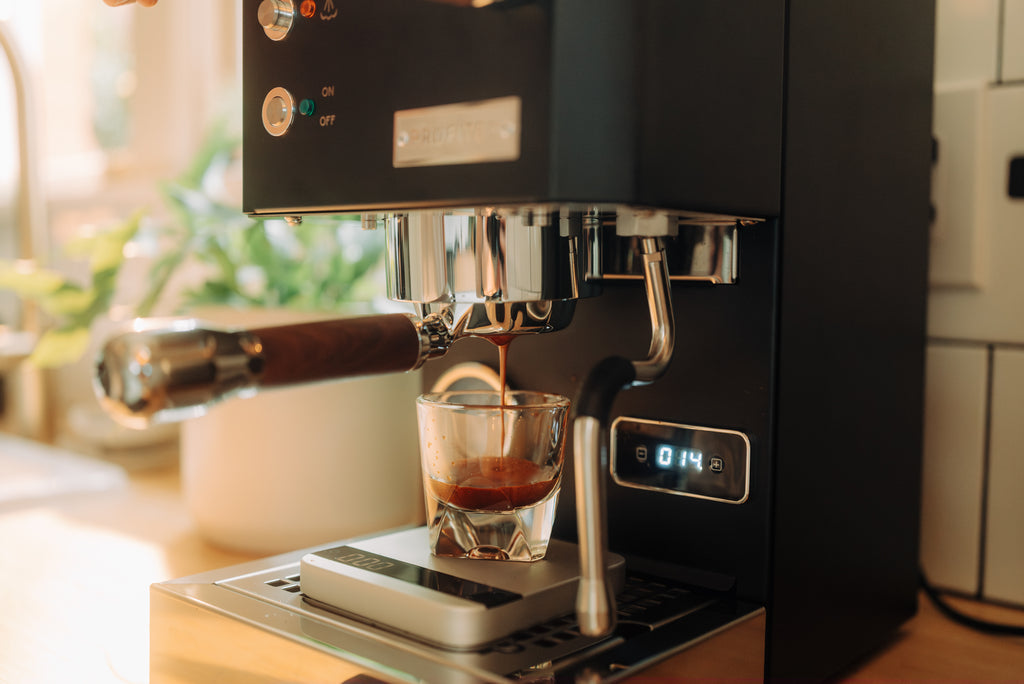
Using a scale for brewing espresso is less about being nerdy about coffee and more about figuring out what tastes good to you and what doesn’t. You may ask, “Well, can’t I simply taste the shots I pull to determine if I like them or not?” Yes, dear reader, you sure can, but how would you know how you got there? Would you be able to repeat those results, and if not, how would you troubleshoot it without wasting loads of coffee? Clearly, we have no shame in beating a dead horse here, but we’ve written extensively about the importance of using a scale to make espresso at home here, here, here, and here.
Using a scale helps you:
- Build an espresso recipe written as a ratio (1:1,1:2, 1:1.5, 1:3, etc.)
- Some, like the Lunar and Precision scale, help time your extractions
- Troubleshoot extraction issues more quickly than eyeballing it
- Make you a better home barista
DON'T worry about soggy espresso pucks
One of our most popular (and fun) YouTube videos was Espresso Pucks: What Matters & What Doesn't because it exposes the anxiety that a lot of new home baristas have—a fear of untidiness or a sort of ataxophobia (just kidding, coffee’s not that serious!), where the concern about a soggy puck is more about the appearance of things, rather than what your shot tastes like. The awful truth is that you visually learn very little about a shot during extraction and even less by looking at the spent espresso puck afterward. Sure, your puck may have a little liquid on top after pulling a shot, or it may come out messy in your knock box, but that’s just the reality of making coffee—it can and will get messy sometimes. Have some clean microfiber towels at the ready to keep a pristine bar.
On the other hand, if your expresso tastes terrible and you have puck defects, you may want to make some adjustments, such as altering your coffee dose, changing your grind, or your tamping may be uneven.
DO brew espresso with a fresh bag of coffee that has a roast date
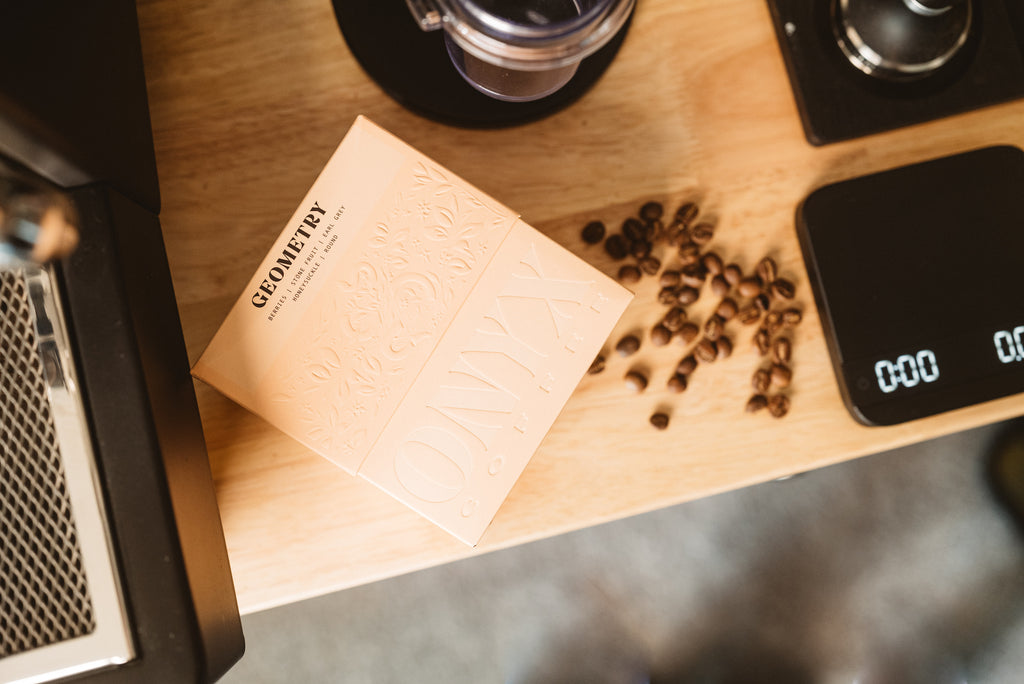
Look for freshly ground coffee with a roast date (within 3-10 days off the roast) printed somewhere on the bag. Avoid coffees that exclusively have a best-by-date on them. Once you open a bag of coffee, the beans are exposed to oxygen and light and begin off-gassing Co2—degrading as the days pass. As the coffee ages, extraction results become increasingly inconsistent, leading to extraction issues and bad-tasting espresso. We do not recommend using beans for espresso over a month off the roast.
There are some exceptions to this rule. For instance, some specialty coffee roasters have blown up and begun roasting for large wholesale accounts like grocery stores. Thus, you may see your favorite Sightglass Coffee Roasters blend at Whole Foods, and you’ll see both a best-by date and a roast date on the bag—but didn’t you just say that you should avoid coffees with best-by dates like the plague? I wish the world were so black and white. Since you’re not purchasing the coffee directly from the roaster, many of these coffee bags are valved and sealed to keep the 2 top coffee killers out—sunlight and oxygen. Once you open the bag, the coffee begins off-gassing and aging like normal. Enjoy within the same one-month timeframe for optimal results.
Some home baristas employ more advanced coffee-keeping techniques, such as freezing. Suppose you want to cryo-preserve your favorite coffee. In that case, we recommend dosing the beans out in individual vials because every time you open that bag of coffee and remove it from the freezer, you’re letting moisture get in. Many specialty cafés like Proud Mary employ this technique in their cafés during service.
DON’T backflush your espresso machine every day
Excessive cleaning, while admirable, can sometimes be detrimental to your equipment. Espresso machine cleaners such as Biocaf are exceedingly good at doing their job—stripping coffee oils and removing off-flavors from your group head, but how often should you do it? It depends on your frequency of use, but for home users, generally, once a month. If you are a proud owner of a classic E61 espresso machine, backflushing with detergent too often can remove necessary lubrication on internal parts like the camshaft and other brass valves, making lubrication necessary more often and wear and tear parts like gaskets wear down more quickly.
Many home baristas will perform a water backflush every day or, sometimes, after each shot. This is, well, a bit excessive. You’re not hurting your espresso machine but also not helping anything. Water will not clean coffee oils on its own. For proper backflushing technique, check out our handy guide here.
DO keep a coffee journal

Making espresso at home can be difficult at first, but once you get more experience and pull that perfect espresso shot for the first time, it makes everything worth it. We need to practice Espresso making to get better, and keeping a log of the statistics of your best and worst shots is good practice. It’s also handy to taste everything. That doesn’t mean you must drink every shot, but you should still taste it to build up your palate.
Palate development is key because you start to form a vocabulary for what you are tasting. Perhaps you didn’t immediately perceive those more delicate notes of a particular coffee. Still, after spending some time with it and tasting it repeatedly, you come to a deeper understanding of it. Do yourself a favor and keep a shot journal; your tastebuds will thank you.
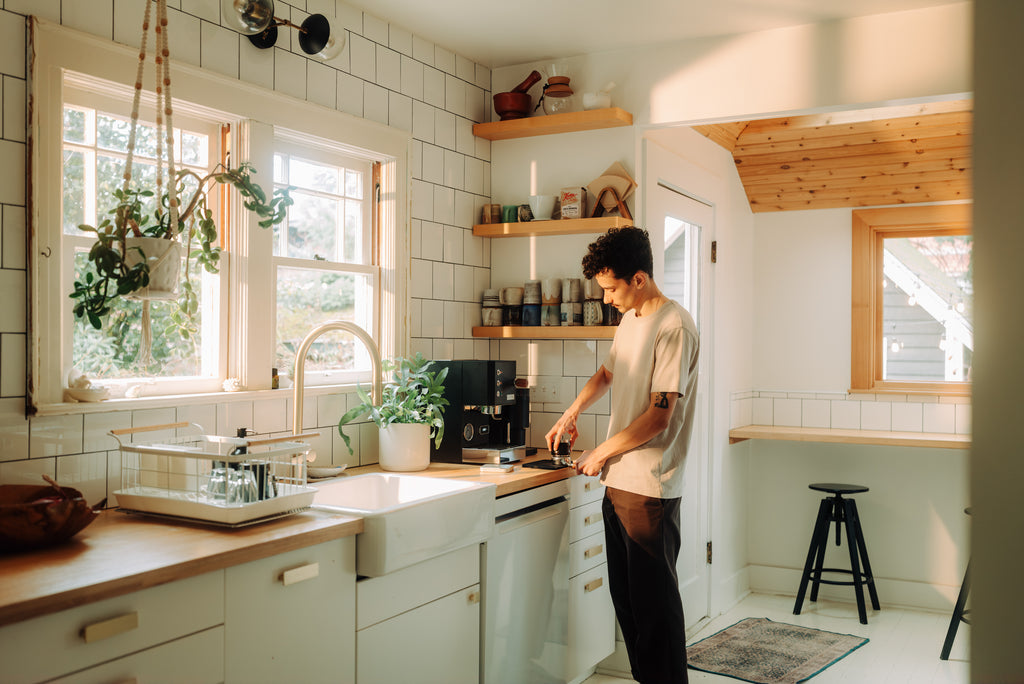
Espresso-making has few boundaries, but a few rules of thumb can help you along the way. It’s easy to lean on the prescriptive side and ascribe rules to everything you should be doing that appear to make things easier, but we’ve found that hard and fast rules like 40 lbs of tamping pressure tend just to muddle things. If we discovered tomorrow that using a scale was not beneficial to making better espresso, we would be the first to wave that flag. Remember, what matters most is if the shot tastes good to you. That’s all that matters when it comes with making espresso at home.